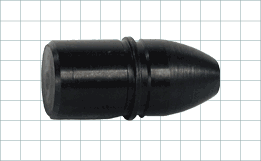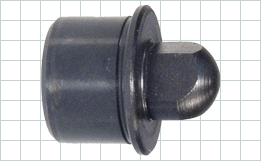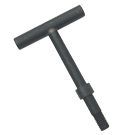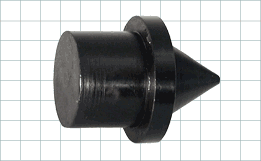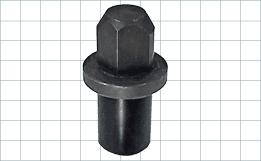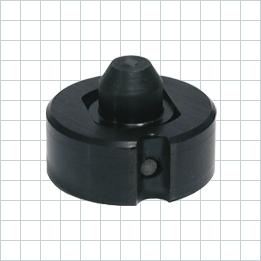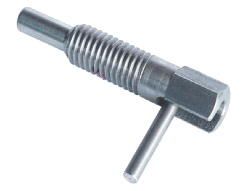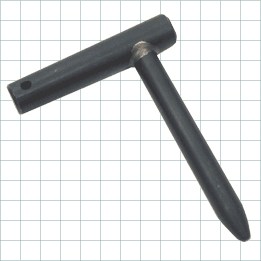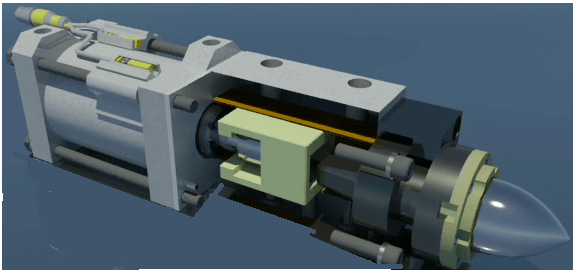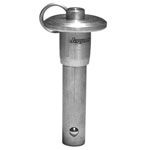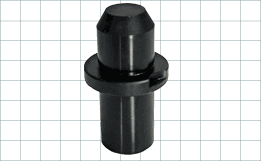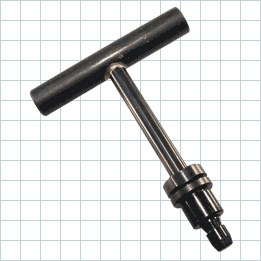Locating and Fixturing Pins Information
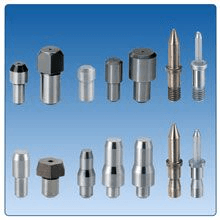 Locating and fixturing pins are press-fit, removable hardware devices designed to align or affix two work pieces to very small tolerances. When translation mechanisms are not stable or precise enough to place objects in position for a particular process, locating and fixturing pins can ensure an accurate alignment. They can be activated manually, pneumatically, hydraulically, or electrically. Spring locating pins are not covered in this tutorial, but these devices and their specifications can be examined on Spring Locating Pin Selection Guide.
Locating and fixturing pins are press-fit, removable hardware devices designed to align or affix two work pieces to very small tolerances. When translation mechanisms are not stable or precise enough to place objects in position for a particular process, locating and fixturing pins can ensure an accurate alignment. They can be activated manually, pneumatically, hydraulically, or electrically. Spring locating pins are not covered in this tutorial, but these devices and their specifications can be examined on Spring Locating Pin Selection Guide.
Operation
Locating and fixturing pins are typically meant to be used in conjunction with a mating anchor or bushing. They align components in many high-stress applications along their longitudinal axis. Two pins--of different styles and lengths--are usually used together to compensate for dimensional differences between mounting holes, and to correctly position the workpiece during pin insertion. This repeatability is useful when machining interchangeable components. Most pins have a tapered or conical shape to ease insertion. It may be necessary to adopt a pin mounting technique that will allow replacement if the locating or fixturing pin becomes worn.
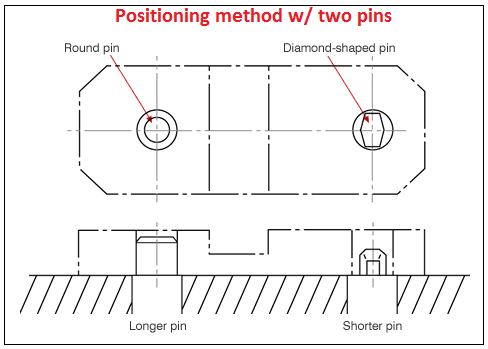
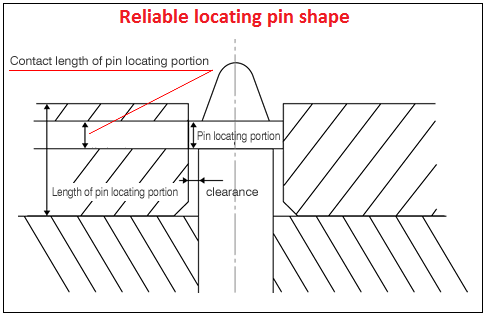
Images credit: Misumi Corp.
Locating and Fixturing Pin Production
Like many cylindrical hardware devices consisting of metal, locating and fixturing pins are roll formed with minor alterations to change individual specifications. The production method is visualized in the infographic below.
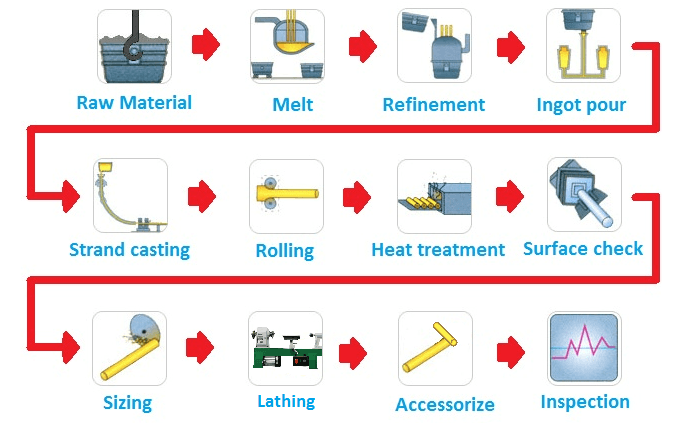
Pin Material
Common locating and fixturing pin materials include:
-
Aluminum is light, malleable, ductile, thermally and electrically conductive, and resistant to oxidation. It is not suitable for heavy loads.
-
Brass has good temperature ductility, is electrically conductive, has excellent corrosion resistance, and is relatively strong.
-
Plastic is lightweight, easily molded, corrosion resistant, and inexpensive, but it can only handle light loads.
-
Hardened, ground steel undergoes a heat treatment process that compacts carbon atoms, resulting in a stronger but more brittle version of the metal. If uncoated, it is likely to oxidize under certain conditions.
-
Unhardened steel is more malleable and less expensive than hardened steel, but also cannot handle extreme loads. It is vulnerable to corrosion.
-
Stainless steel is corrosion resistant, aesthetically appealing, and exceptionally strong, but is also more expensive than other steel options.
-
Exotic metals, like titanium, have properties that are especially suited for the application. These are the most expensive option as well.
Configurations
Varieties of locating and fixturing pins are produced for specific applications, or to be used cooperatively to promise a correct alignment.
Pin Head Styles
The head is the portion of the pin that is inserted into the bushing or anchor, but provides no positive grip. Some heads may have a small air vent to relieve pneumatic pressure.
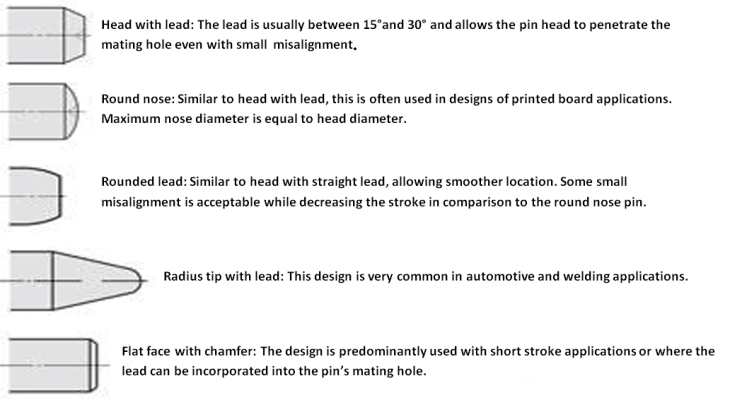
Image credit: Alliance Communications Inc.
Pin Shank Styles
The shank is the section of the pin that is installed in the mounting fixture, but does not come in contact with the workpiece. Bottom-mount shanks are the most common and easiest to install, but side-mount and top-mount shanks are available as well.
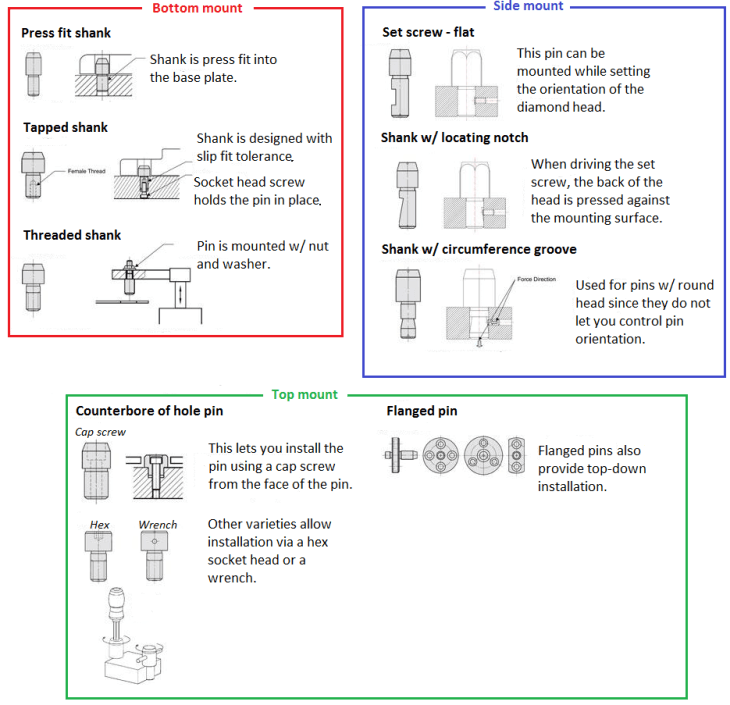
Types of Locating and Fixturing Pins
|
Image credit: Carr Lane
|
|
Image credit: Carr Lane
|
|
Image credit: Carr Lane
|
|
Image credit: Carr Lane
|
|
Image credit: Carr Lane |
|
Image credit: Klein Tools
|
|
Image credit: Carr Lane
|
|
Image credit: Riteon Corp.
|
|
Image credit: Carr Lane
|
|
Image credit: Welker Engineered Products
|
|
Image credit: Jergens Inc.
|
|
Image credit: Carr Lane
|
|
Image credit: Carr Lane |
Resources
Misumi USA Inc. - Locating Pins and How They Are Used; How to Use Locating Pins
Image Credits:
Misumi USA
- quick release pin
- threaded locating pins
- clamping device
- drift pin
- Locating and Fixturing Pins
- tapered locating pins
- clamping mechanism
- cone locating pins
- cone locator pin
- datum pin
- diamond locating pins
- fixture locating pins
- floating locating pins
- hydraulic pin
- metric locating pins
- PCB locating pins
- tolerance stackup
- metric diamond locating pins
- miniature diamond locating pins
- precision locating pins
- stainless steel locating pins
